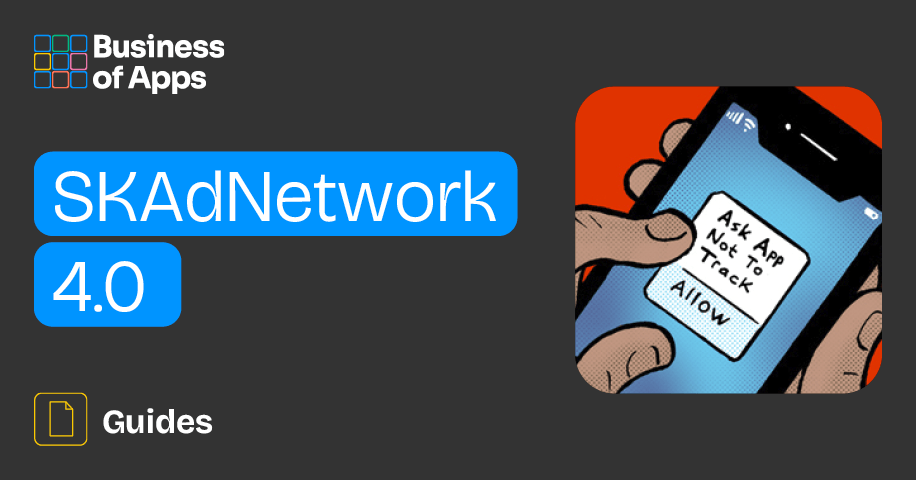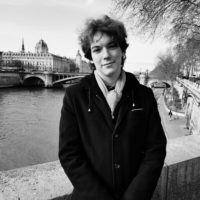
A new version of SKAdNetwork was announced at Apple’s WWDC 2022. Alongside this new version, Apple introduced a plethora of new features during the conference. The main focus of the updates is to send more data to marketers, publishers, and developers alike while guaranteeing users’ privacy. So, let’s dive into the mobile attribution sea, explore what improvements were made, and how they are going to change the industry going forward. This is definitely a must-read if you are looking to ace your iOS campaigns.
The main changes in SKAdNetwork 4.0 include:
- Crowd anonymity
- Hierarchical source identifiers
- Hierarchical conversion values
- Multiple conversions
- SKAdNetwork attributions for web
- Improved testing experience
So, let’s explore each of these updates in turn.
Crowd anonymity
Let’s start with crowd anonymity, perhaps the biggest and most important of all the new features.
Crowd anonymity
Put simply, the more installs your app gets, the more data you will get since it’s hard to identify any given user in a large pool of installs. However, a low number of installs will limit the granularity of data (i.e. the amount of trackable information available) shared by Apple. And it is thanks to this new feature that Apple can now share more data with advertisers and developers while maintaining high levels of user privacy.
Hierarchical source identifiers
With SKAdNetwork 4.0, Apple replaced the old two-digit campaign identifier with a new four-digit source identifier. This new source identifier will let advertisers identify which campaign an app install is attributed to and can also provide any other additional attribution information. This is also the first and main example of how Apple is going to share more data with marketers and developers. So, let’s see how it works in practice then?
Four-digit source identifier
The idea is to use the new four-digit source identifier as three hierarchical sets of numbers. The easiest way to understand this is to consider this field as a single number composed of combinations of two-, three-, and four-digit numbers. As an example, two digits could stand for the ad campaign, the third could represent the location, and the fourth could mean the ad placement.
This change will allow for more flexibility in campaign structure and variable testing. Instead of only having 100 IDs for testing campaign variables to get deterministic attributions, there will be, potentially, 10,000 different combinations available.
User Acquisition Buyer's Guide
Download our User Acquisition Buyer’s Guide to get a full list of the best service providers on the market to choose from. The guide also covers what is a user acquisition company and how to choose the right one.
An important thing to note, however, is that while two digits will always be present in the postback, the remaining two will be subject to Apple’s privacy threshold. In practice, this means that if you don’t have enough installs, you will be sent only two source identifier digits, which, in turn, means that there will be only 100 campaign IDs available for you. In other words, the availability of campaign ID’s scales with ad spend
Crowd anonymity and source identifier
But as the number of installs grows and meets the privacy thresholds, more source identifier digits will be sent, which, in turn, will increase the granularity of the data for advertisers.
Put simply, the number of digits available depends on the number of installs.
Consider also that there are two different thresholds – one that will get you three digits, and another that will unlock the complete four-digit source identifier.
Hierarchical conversion values
Apple also updated the conversion values, adding a new coarse-grained value in addition to the old fine-grained value.
- Fine-grained value refers to a 6-bit value (with up to 64 variables) that can be set up to collect valuable performance insights.
- Coarse-grained value can assume three different values – high, medium, or low.
Conversion values
The fine-grained value is the same as the one we have today, but thanks to the new coarse-grained value, there will be at least some data on conversions even if the number of installs is too to meet Apple’s privacy regulations.
However, while both values are captured during the measurement window, only one of these two values will be sent back to the advertiser.
Crowd anonymity and conversion value
With SKAN 4.0, whether you get a conversion value or not still depends on the number of downloads and the level of user privacy met by the campaign.
To decide what conversion value you’ll get or whether you’ll receive a conversion value at all, Apple relies on crowd anonymity. Under this new system, there are three different tiers based on the number of installs generated by a campaign:
- Less – the install count is low and, therefore, doesn’t meet the privacy threshold. In turn, no conversion values will be sent to advertisers.
- More – an intermediary level where the number of installs is high enough to meet the privacy threshold. Postbacks in this stage will get a coarse-grained conversion value.
- Most – the number of installs is high enough to access detailed attribution data without compromising user privacy. Postbacks in this stage will get a fine-grained conversion value.
Multiple conversions
Another significant improvement is multiple conversions (postbacks).
Conversion timeline
With previous SKAd versions, it was difficult to measure engagement since only one postback was sent. But with SKAdNetwork 4.0, up to three postbacks can be received for specific conversion windows, and each conversion window can include multiple engagements. There are three postback windows to consider:
- Postback window 1 – 0-2 days
- Postback window 2 – 3-7 days
- Postback window 3 – 8-35 days
Postback windows
Note that only the first postback will get a fine-grained conversion value, with the rest receiving coarse-grained values.
Thanks to these changes, advertisers will now be able to better measure user engagement with their app over time, which could prove extremely helpful to app businesses that benefit from tracking events later in the user journey. Additionally, marketers for verticals in which key conversion events typically occur within the first seven days, such as fintech or eCommerce, will now be able to better understand the quality of users after the initial 24 hours post install.
SKAdNetwork attributions for web
Up until now, advertisers could track app-to-app and app-to-web campaigns through SKAdNetwork. However, advertisers looking to track users who were directed to the App Store after clicking on a mobile web display ad, for example, were not so lucky.
But the new updates allow for SKAdNetwork 4.0’s attribution for web-based ads that lead directly to the advertised app’s product page on the App Store.
Attribution for web-based ads
It can be implemented both for first-party sites and for advertiser iframes as long as they lead directly to the App Store.
Improved testing experience
Finally, Apple also improved the testing experience for SKAdNetwork. The two major new features introduced to aid in testing are:
- Validating Ad Impression implementation
- Testing SKAdNetwork postbacks in Xcode
Testing postbacks
What problems does SKAdNetwork 4.0 solve?
The changes to SKAdNetwork 4.0 represent a dramatic enhancement to the tool’s current state and a foundational re-imagination of the measurement framework by addressing many of the limitations and restrictions of previous versions and solving a few key problems. So, let’s have a look.
Let’s start with the fact that conversion values are only transmitted with install postbacks when a certain privacy threshold is met. This is true of both SKAdNetwork’s current version and SKAdNetwork 4.0. What this means in practice is that a campaign must generate enough installs to meet Apple’s privacy regulations in order for conversion values and source app identifiers to be included with its postback. This, in turn, creates a chicken-and-egg dynamic: a marketer can’t scale a campaign without performance data, but the campaign won’t generate enough performance data without scale. The difference between SKAdNetwork’s current version and SKAdNetwork 4.0 lies in the coarse conversion value, which was introduced with SKAdNetwork 4.0 to address this very problem since advertisers will get a coarse-grained conversion value in the postback when a minimal level of crowd anonimity is met. Apple’s privacy threshold still needs to be met if advertisers want the fine-grained value, but those who don’t meet it will at least not be left completely in the dark.
Another throny aspect of SKAdNetwork’s current version is that its existing timer system incentivizes advertisers to collect conversion values from early in the customer journey. In turn, the timer expires very soon after the install, reducing the round-trip feedback loop for advertising platforms and resulting in a considerable lack of transparency when measuring user engagement. But with SKAdNetwork 4.0, Apple addresses this issue as the timer system is being replaced with the three attribution windows discussed above (0-2 days, 3-7 days, and 8-35 days). Each of these windows will produce a separate postback, allowing advertisers to measure user engagement from later stages of the user journey.
And finally, the current version of SKAdNetwork only allows for up to 100 campaign identifiers to be used per app, per ad platform, which limits the number of permutations that an ad platform can test at a time. SKAdNetwork 4.0 addresses this by creating a hierarchical source identifier field that can hold up to four digits, allowing for a total of 10,000 different possible values (0-9999). The addition of these new digits to the source identifier field could allow advertisers to conduct more thorough tests with campaign parameters and capture more distinct campaign characteristics.
Explore our further reading suggestions to learn more:
- SKAdNetwork release notes
- Meet SKAdNetwork 4.0, Apple’s updated attribution API that’s no longer ‘actively painful’ to use
- SKAdNetwork 4.0: What’s new for app campaigns and advertisers
- SKAdNetwork 4.0: what problems does it solve?
- Will SKAdNetwork 4.0 finally kill device fingerprinting?
- SKAdNetwork 4.0 FAQ
- Apple’s WWDC22 insights: from iOS 16 to SKAdNetwork 4.0
- SKAdNetwork 4.0: What App Advertisers Need To Know
- How to optimize SKAdNetwork campaigns on Meta, Google, TikTok, and Snap
- SKAdNetwork 4.0 is out, let’s build your strategy
- Filling in the blanks: How a new model alleviates the pain from SKAN’s privacy threshold
- Simplifying SKAN 4.0: 5 features that will help you master the changes













